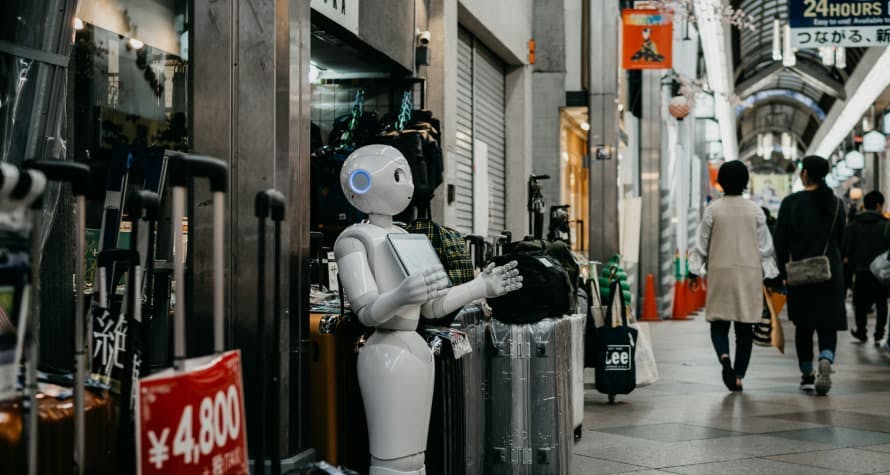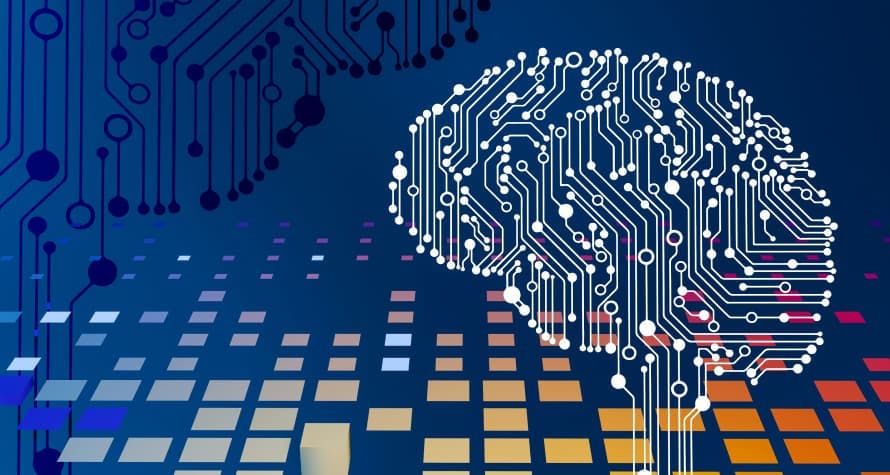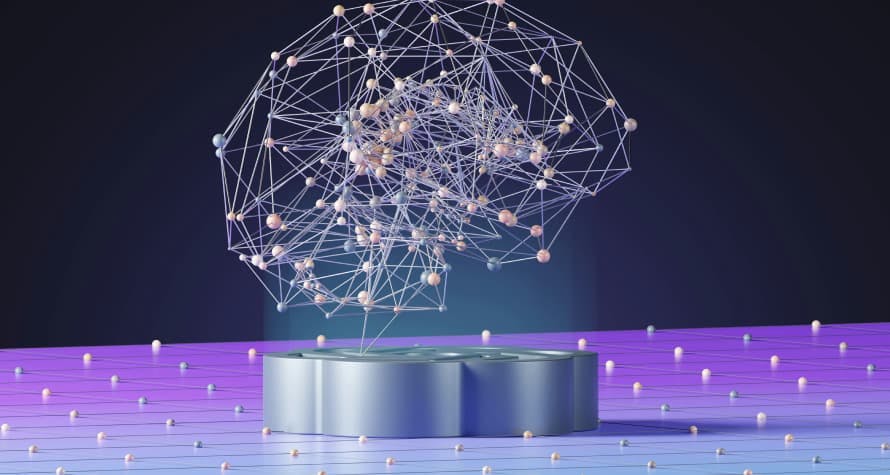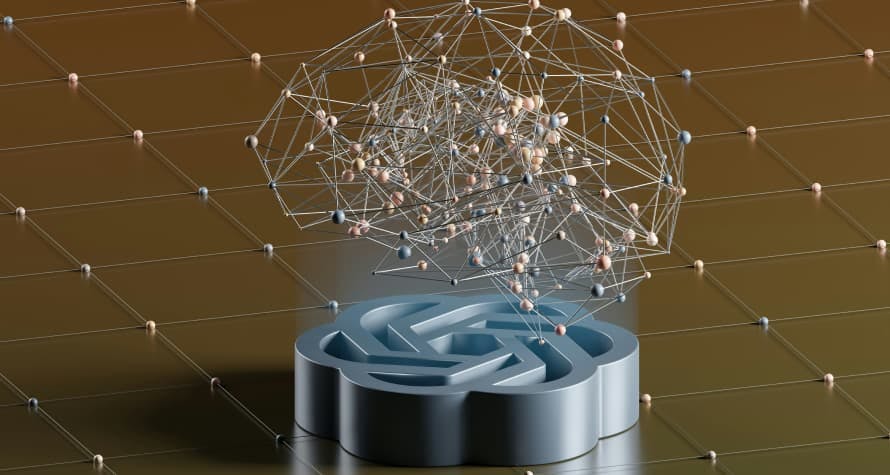ESG / CSR
Industries
What is the Environmental Impact of AI?



AI has taken the world by storm, with digitized voices for music fans to hear artists to cover songs they’ve never sung for real, create non-existent complex and life-life images, ask questions, and even help manage a company’s climate journey – but what does the potential AI environmental impact mean for our future?
AI refers to the process of computer and technology mimicking human processes – such as a singing voice to be used to cover a song or to curate a never-been-taken picture.
In this article, we'll discuss how AI can help with sustainability, how AI negatively impacts the environment, and ways to improve AI to ensure the benefits outweigh the consequences.
What is AI or Artificial Intelligence?
Artificial Intelligence, more commonly referred to as AI, is the practice of simulating human intelligence via technological systems – usually computers.
💡The main goal of AI is to help reduce the need for humans to complete tasks that can ultimately be done by AI – which could include efforts such as spellcheck, taking inventory, or other once manual efforts that can now be done with the help of technology.
However, it’s important to note that AI is often used for lighthearted activities as well – such as to have an opponent while playing a virtual board game or to draft a monologue with the voice of a celebrity.
There are two main types of AI:
- Narrow AI – This type of AI is made to assist people, such as with Apple’s “Siri” and Google’s “Alexa” designed to answer any question the user is to ask these AI helpers. Narrow AI is “narrow” as it cannot complete tasks outside of its programmed design, which is why sometimes Siri or Alexa don’t have an answer for the question you asked.
- General AI – This type of AI is more malleable and open to learning as opposed to Narrow AI, as it often has access to more resources than Narrow AI and its more limited programming.
AI has become the talk of the town as automation becomes a part of our daily lives: from automatic cars, self-serving restaurants without waiters in Japan, to AI music covers on TikTok – and it’s probable that AI will only continue to grow from here.
👉 Artificial Intelligence is meant to help individuals and businesses alike improve upon their existing efforts – such as by providing assistance to ensure precision or detecting potential fraudulent activity, both of which are two things the human brain may struggle to remain aware of on its own.

How can AI benefit sustainability and protect the environment?
There are several ways AI can help to improve sustainable efforts, protect the planet, and tackle climate change as a whole – such as by monitoring weather, new patterns of pollution, and managing current agricultural systems to adhere to existing climate obstacles.
Here just a few of the ways the potential AI environmental impact could make Artificial Intelligence indispensable in the midst of our worldwide efforts to combat climate change:
- Track Melting Icebergs – Did you know that flowers have started blooming in Antarctica? Climate change is destroying one of the coldest climates on the planet, but luckily – the potential AI environmental impact could help rectify this situation. This is because AI can monitor where icebergs are melting, and at what rate, 10,000 times faster than the human race alone could.
- Map Deforestation – Efforts to ramp up the production of new popular crops such as soy or even for urbanization during worldwide events like the Olympic Games often result in deforestation, but luckily – AI from space can help humans pinpoint the largest areas of land for concern.
- Improve Recycling – Unbeknownst to most, many of the items we recycle don’t end up in the recycling – with a staggering 85% of plastic having ended up in landfills in the U.S. during 2021. However, AI might be able to help fix that – with new softwares that can help facilities to track incoming items and allow them to recycle more efficiently.
- Protect Marine Life – Plastic is continuing to pollute our oceans, but the AI environmental impact could help to deter future harm to marine life by helping to draft maps of our vast ocean and remote areas where trash could be lingering. This demonstrates how AI can help to avoid future plastic pollution.
- Prepare for Natural Disasters – Hurricanes, tornadoes, tsunamis, and earthquakes – regardless of the type of natural disaster, these catastrophic events induced by mother nature always leave something in their wake, such as the need to rebuild an entire community of even delay business taxes from being filed. AI could help to reduce the long-term impact of natural disasters by predicting when are where natural disasters are to occur next, which can allow ample time for communities to prepare.
- Supply Chain Management – AI can help to decarbonize your supply chain and improve overall business efficiency by helping to keep track of various algorithms, prevent supply chain disruptions, and oversee all general activities – all of which AI can do more precisely and avoid potential human error.
👉 Even though many people may think of AI as a trivial online tool, businesses and individuals alike can utilize AI to help support them in their climate journeys – and even exceed their existing goals with the ability to allocate other roles, resources, and responsibilities onto humans or AI where most appropriate.

How is AI negatively impacting the environment?
Despite the indispensable benefits of AI in the midst of climate change, the potential AI environmental impact can also prove to be a negative one – such as with AI contributing to excessive electronic waste.
Here are some of the ways AI could prove harmful to the planet:
- Disposal & Electronic Waste – AI requires more technology and computers to be running than usual, meaning at the end of its life cycle – AI could create more electronic waste than previous computer systems installed at business facilities.
- Excess Energy Consumption – AI systems can help us to see things we can’t with the naked eye alone, but the price for this increased knowledge can put strain on the planet – as more energy is required to run AI systems (many of which may need to be running nonstop to prove effective). Therefore, AI could lead to greater carbon emissions – especially if the AI systems used amongst businesses are not running on renewable energy sources.
- Could Provoke a Lack of Incentive – While it's true that AI can help with the development of a business's climate plan, it can't implement that plan for the company in question. Therefore, AI could negatively impact the environment by generating too many ideas to the extent it prohibits a coherent action plan.
- AI Could Put Stress on Our Energy Grids – It has been well documented that when new technology endeavors arise, such as AI, it results in a shortage across our electricity grids. This means that as we stray away from the use of fossil fuels to power our home, more electricity will be needed to power homes – something that will become sparse if all that said electricity is used to power AI or conduct AI research.
- Necessary Data Storage – AI cannot run without adequate data storage, which creates its own carbon footprint – such as from the maintenance and the energy required to cool overheating data storage.
- Potential AI Miscalculations – AI is an excellent choice for tedious tasks that nobody wants to do when a computer can do it – like spellcheck or asking what the weather is outside. However, because AI lacks personal judgment the way humans do – an Artificial Intelligence’s algorithms may miscalculate the impact a natural disaster could have on a community, leaving the affected area without the correct amount of resources it needs.
👉 AI can have a negative impact on the environment in addition to providing valuable in a company’s climate journey, therefore – it’s best to utilize AI under specific circumstances.

How can we do AI to reduce the potential AI environmental impact?
AI can be equally beneficial and harmful to the planet, meaning either changes will need to be made to AI in order to mitigate the potential environmental impact on behalf or AI – or individuals and companies alike will have to manage their expectations and use AI more sparingly or only under specific scenarios.
Here are some ways we could reduce the consequences of a negative AI environmental impact:
- More Energy-Efficient Algorithms – AI systems could reduce their energy consumption if their algorithms were in line with the energy efficiency needs of today. This can be done with new streamlined networks in addition to the development of more energy efficient algorithms.
- Data Center Improvement – Choosing more efficient data centers or seeking to improve the current data center your company’s AI system utilizes can help to reduce the carbon footprint of your company’s AI. Some ideas to choose a more eco-friendly data center storage system are to opt for facilities that make use of renewable energy Optimize data center infrastructure and cloud computing platforms to improve energy efficiency and reduce the carbon footprint of AI training and deployment. This includes implementing techniques like dynamic resource allocation, server virtualization, and renewable energy integration.
- Improved AI Training & Data Quality – AI is a lot like the phrase, “monkey see, monkey do” – which means sufficient AI training needs to be done to ensure that AI systems are not biased when providing the user with various information. Therefore, it is also imperative to focus on specific data samples and avoid repetitive data collection or input – as this could encourage AI bias.
Overall, AI doesn’t have to create a negative environmental impact – but we can greatly reduce the chances of this happening by working to make AI more energy efficient and remaining cognizant of when AI is most suitable to be used. If we move forward with this ideal in mind, the potential benefits to be reaped from AI’s environmental impact could help us address the global challenge of climate change.

What About Greenly?
If reading this article about the environmental impact of AI has made you interested in reducing your carbon emissions to further fight against climate change – Greenly can help you!
It can be challenging to decide how to best implement AI into your business model, but don’t worry – Greenly is here to help. Click here to schedule a demo to see how Greenly can help you find ways to effectively implement and utilize a better climate strategy.
Greenly can help you make an environmental change for the better, starting with a carbon footprint assessment to know how much carbon emissions your company produces.




